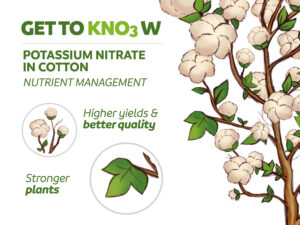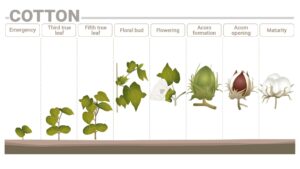In some cotton fields in Brazil and abroad potassium deficiencies developing late in the season have been observed. Therefore two years experiments were conducted to study the effects of timing and rates of KNO3 sprays on leaf K content, yields and fiber quality in sites with different yield potentials for cotton (Gossypium hirsutum L.). The experiments were developed in Pederneiras and Boracéia, SP, Brazil. In the first two experiments 16 or 32 kg KNO3per hectare was applied at a dose rate of 8 kg/ha per spray. So 16 kg equals 2 sprays and 32 kg equals 4 sprays, spraying started at different moments after start of flowering but always repeated at weekly intervals. In the other experiment KNO3 was applied at 32 kg/ha and split in four equal sprays of 8 kg/ha at weekly intervals starting moment different from the first to the fourth week after the beginning of flowering. The decrease observed in K contents of cotton leaves was considered a natural process and was not reversed by K application. Foliar fertilization with KNO3 increased the K contents in the leaves in some conditions, as in cotton plants deficient in K. However, this did not affect K contents in the cotton fruits, cotton yields and fiber quality.
Artículos
Late season potassium deficiency in cotton prevented by foliar-applied potassium nitrate
Related Crops

Author
Rosolem, C. A. and J.P.T. Witacker. 2007. Adubação foliar com nitrato de potássio em algodoeiro. Bragantia, 66(1): 147-155.


